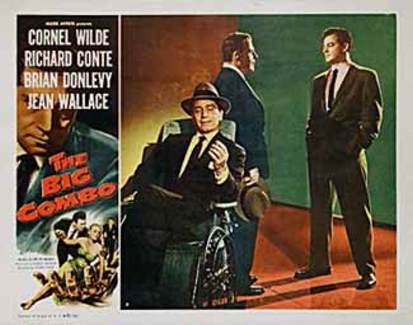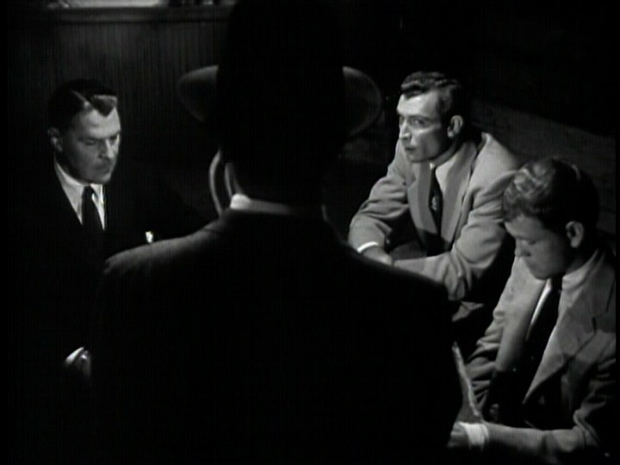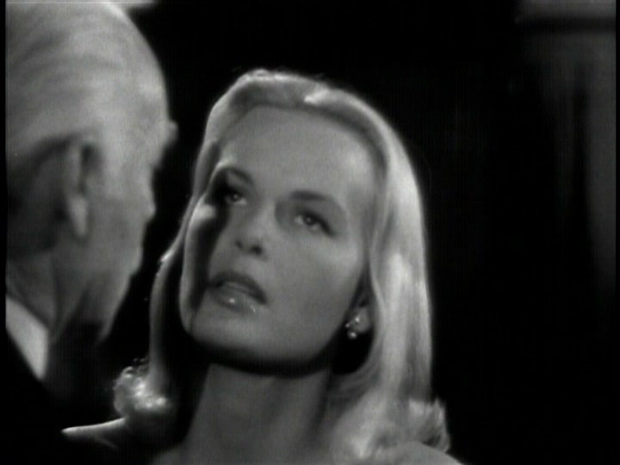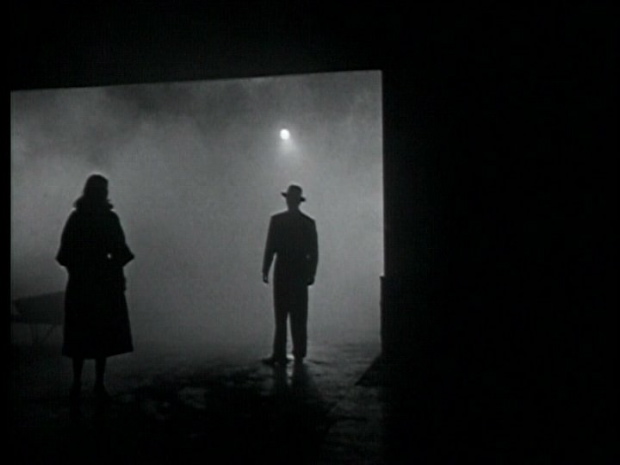
The subject matter of The Big Combo, a terrific B-picture from 1955, might have easily been treated within the confines of a late-era crime melodrama or a police procedural —
instead it lurches instantly into the territory of the classic film noir and never leaves it, at least not for long. It’s something you might expect from its director Joseph H. Lewis, who also directed Gun Crazy, one of the darkest and bleakest of all noirs.
The Big Combo is about a policeman’s attempt to bring down a modern crime lord, Mr. Brown — a man so rich and powerful that he never has to soil his own hands with
the dirty work. The police don’t have the financial resources to investigate his multifarious organization, the big combo of the film’s title, and Brown has enough friends in high places to put pressure on any cop who does try to go after him.

Cornell Wilde plays the one cop who won’t give up, won’t buckle under the pressure, and his boss thinks he’s lost his mind. Fighting Brown is fighting the corruption of the whole world — a fool’s errand. It’s Wilde’s essential loneliness that makes him a classic noir protagonist. He doesn’t represent the decent forces in society opposed to “respectable” thugs like Brown — those forces simply don’t exist. This is what distinguishes The Big Combo from a traditional crime melodrama or police procedural.
At the same time, Wilde’s detective is hardly pure himself. It’s suggested that he secretly admires Brown, is secretly in love with Brown’s moll — that his crusade is motivated more by jealousy and resentment than by morality or a love of justice. This is what distinguishes the protagonist of this film from the traditional “tarnished knight” hero of traditional hardboiled detective fiction. The code of honor of the Wilde character is suspect.

At one point the moll, explaining why she can’t leave Brown, says, “I
live in a maze . . . a strange, blind and backward maze, and all the
little twisting paths lead back to Mr. Brown.” That’s the
predicament of Wilde’s character as well. By the end of the film,
the view of the world we’ve been given makes it quite irrelevant
whether or not Brown is ever brought to justice. There’s no sense
that the world will be a better place if he is, because it will still
operate by the same rules — Brown’s rules.
The Wilde character’s fight to extricate himself from the maze is
heroic. He will save a few lives and avenge a few others along
the way, but his existential dilemma will never be resolved, because
the big combo is the world and it won’t change. It will stay noir.

The ending of The Big Combo echoes the ending of Casablanca visually. But what different moral universes the two films inhabit. In 1942, Casablanca could make idealistic sacrifice look glamorous and sexy. By 1955, ten years after the end of WWII, the cost of such sacrifice had been measured. We had defeated the Axis evil, but to do so we had had to summon up reserves of evil within ourselves, and the ghost of it hovered, in the shape of a mushroom cloud, over everything.
The Big Combo has been added to my film noir canon. Sadly, there isn’t a satisfactory DVD edition of the film, although the Geneon release is watchable and cheap. The Big Combo deserves better, if only for the wonderfully inventive cinematography of the
great noir master John Alton.

Pingback: A FILM NOIR POSTER FOR TODAY | mardecortésbaja.com